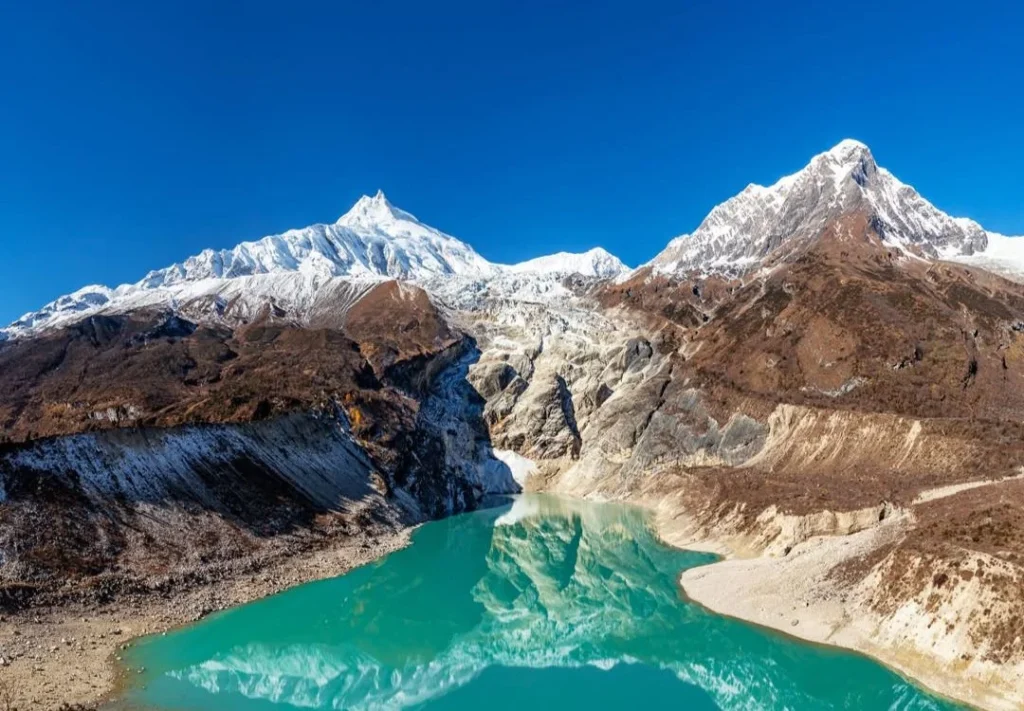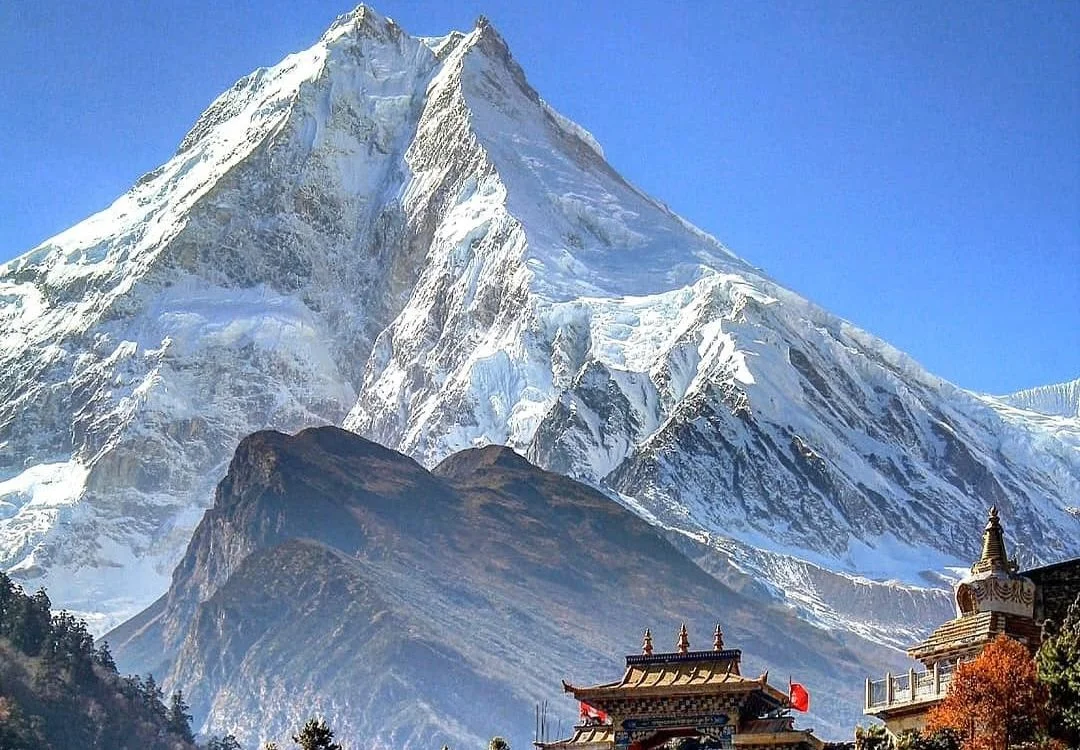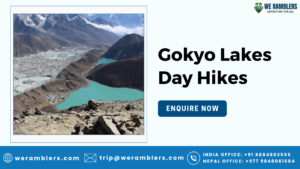Rescue During Manaslu Circuit Trek: Your Ultimate Safety & Evacuation Guide
The Manaslu Circuit Trek is a hidden gem of Nepal’s high-altitude adventure routes, offering raw Himalayan beauty, deep gorges, glacier-fed rivers, and authentic Tibetan-influenced culture. Circling the majestic Mt. Manaslu (8,163 meters), the trail reaches a thrilling climax at Larkya La Pass (5,160 meters), one of the highest mountain passes in Nepal. This 14–18 day trek is renowned for its pristine remoteness and diverse ecological zones.
But with breathtaking beauty comes serious responsibility. The altitude gain is steep and sudden, especially between Namrung and Samagaun. Coupled with basic infrastructure, unpredictable mountain weather, and isolation from major hospitals, rescue during Manaslu Circuit Trek can become vital. Emergencies aren’t common but are not unheard of, and when they occur, the remoteness of the trail makes a fast, professional response essential.
Whether you’re a seasoned trekker or a first-timer, understanding rescue procedures and preparing for emergencies is as important as packing your boots.
Types of Emergencies During the Manaslu Trek
While the Manaslu region boasts unspoiled charm and tranquility, the terrain can test even experienced hikers. Here are the most common emergencies that lead to rescue from Manaslu region:
1. Altitude-Related Illnesses
As the trail climbs beyond 3,000 meters, trekkers may begin to experience Acute Mountain Sickness (AMS), a result of the body failing to acclimate properly to reduced oxygen levels. Symptoms include headache, dizziness, fatigue, nausea, and shortness of breath. If untreated, it can escalate to HAPE or HACE — both potentially fatal.
Altitude Sickness Rescue Manaslu scenarios often unfold near Samdo, Dharmasala, or Larkya Phedi, where altitude jumps are significant. These zones are especially critical for trekkers ascending too quickly or ignoring early symptoms.
2. Injuries from Falls or Mishaps
Slippery descents, icy slopes near Larkya La, and loose gravel trails often result in twisted ankles, broken bones, or deep cuts. Trekkers with heavy packs are more prone to balance-related injuries. Medical help is limited, and serious injuries almost always require a helicopter rescue from Manaslu Circuit.
3. Severe Exhaustion or Dehydration
Trekking for 6–9 hours a day at altitude takes a toll. Lack of proper nutrition, low fluid intake, and harsh weather can cause physical and mental fatigue, leading to confusion or collapse. In these cases, the trekker may be too weak to descend without help, prompting a need for emergency evac service in Manaslu region.
4. Weather-Related Emergencies
Sudden snowfall, blizzards, or whiteouts can trap trekkers in exposed areas. Lightning storms, landslides, or freezing winds can result in hypothermia or isolation. Delayed rescue in such cases could endanger lives, making a rapid rescue during Manaslu Circuit Trek critical.
5. Pre-Existing or Acute Medical Conditions
Altitude can exacerbate heart issues, asthma, or even digestive conditions. We’ve encountered trekkers needing immediate evacuation due to appendicitis, altitude-triggered heart palpitations, or infections. Always disclose pre-existing conditions to your trekking operator before setting off.
Helicopter Evacuation Services During Manaslu Circuit Trek: A Life-Saving Lifeline
When ground evacuation is impossible or too slow, helicopter rescue from Manaslu Circuit is often the fastest and safest solution. Time is everything at high altitudes, and airlift operations are streamlined to minimize risk.
How It Starts
The rescue process is usually initiated by your trek leader or guide. Once a serious condition is confirmed, the guide contacts our Kathmandu emergency support team via satellite phone or local network (available in Samagaun or Namrung). A request is sent to authorized air-rescue providers.
The Timeline
Helicopters typically depart from Kathmandu or Pokhara, depending on weather and air traffic. Average flight time to pickup locations ranges from 90 minutes to 3 hours. However, cloud cover, wind, and high-altitude fog can affect availability. In the meantime, the injured or ill trekker is stabilized by the guide using our first-aid protocols.
Key Landing Points
- Samagaun (3,500m)
- Namrung (2,600m)
- Bhimtang (3,590m)
- Lho or Dharmasala (3,180m)
Our guides assist in clearing the landing zone, ensuring the chopper can land safely and swiftly.
Coordination with Medical Facilities
Once the patient is onboard, they are typically airlifted to Norvic Hospital, CIWEC Clinic, or Mediciti in Kathmandu. Our ground team coordinates bed booking, ambulance pickup from the helipad, and informs the insurance provider simultaneously.

Insurance and Cost: Be Financially Prepared
Helicopter rescue isn’t cheap. A Manaslu rescue cost can range from USD $3,500 to $6,500, depending on altitude and location of the pickup. In severe emergencies, these costs must be settled before or immediately after the rescue unless pre-approved by your insurer.
Why Insurance Is Mandatory
Trekkers must obtain travel insurance for Manaslu Circuit Trek rescue that clearly covers:
- Helicopter evacuation up to 6,000 meters
- Emergency medical treatment and hospitalization
- Repatriation to home country
- Trip cancellation or interruption
Without coverage, rescuers cannot proceed unless the cost is guaranteed by family, embassy, or the trekking agency.
The Claims Process
We Ramblers supports you in documenting the incident:
- Medical certificates
- Pilot’s rescue logs
- Flight manifest
- Witness statements
These are essential for reimbursement claims. Make sure your policy number and emergency contact are easily accessible at all times.
We Ramblers’ Emergency Evacuation Support
We Ramblers has built a robust, high-altitude emergency response system for the Manaslu region trekking evacuation. Here’s how we ensure you’re never alone:
- Trained Expedition Leaders: All team leaders are certified in Wilderness First Aid (WFA) and altitude illness management.
- 24/7 Monitoring Team: From our Kathmandu base, our response team tracks all treks, weather conditions, and potential rescue triggers.
- Comms & Tech: Every trek carries satellite phones, walkie-talkies, and GPS trackers for rapid coordination.
- Medical & Logistical Partners: We work directly with hospitals, helicopter companies, and insurance liaisons to ensure zero delays.
Coordination with Authorities and Local Advisors
A smooth rescue from the Manaslu region is only possible through close cooperation with local and national entities. When a rescue is triggered:
- TAAN (Trekking Agencies’ Association of Nepal) verifies permits and authorizes rescue coordination.
- Nepal Army & Police may assist if rescue involves adverse weather or multiple trekkers.
- Ward offices and local municipalities grant permission for chopper landings in their zones.
- Lodge owners and local villagers help prepare flat grounds and provide shelter before the helicopter arrives.
This interconnected system ensures that even in remote locations, help is not far away.
Tips to Avoid Needing a Rescue During Manaslu Circuit Trek
Preventive care is the best strategy when trekking at altitude. Here’s how to reduce your risk:
- Acclimatize Properly: Take rest days at Namrung and Samagaun. Don’t rush your ascent.
- Hydration is Key: Drink 3–4 liters daily, even if you don’t feel thirsty.
- Stay Honest: Tell your guide about any headaches, nausea, or fatigue — early symptoms are easier to treat.
- Pre-Trek Training: Cardio workouts, hiking with a backpack, and stair climbing help prepare your body.
- Pack Wisely: Include a down jacket, personal medications, energy bars, and high-SPF sunscreen.
- Choose a Trusted Operator: We offer professional support, proper planning, and real rescue capabilities.
Frequently Asked Questions (FAQs) About Rescue During Manaslu Circuit Trek
Q1: How long does a typical rescue take?
Helicopters can reach you within 2–5 hours depending on weather. Response is faster in Samagaun and Bhimtang.
Q2: What if I can’t walk to a landing zone?
Our guides will stabilize you, and a long-line rescue (winch) may be attempted if terrain allows.
Q3: Will I get a refund for the unused trek days?
We may offer credit-based refunds for future treks in some situations. Check your booking terms.
Q4: What happens if my insurance is denied?
You’ll need to pay upfront. We can help you get statements and documentation for post-trip reimbursement.
Q5: Are helicopter rescues always successful?
They’re highly reliable, but weather can delay operations. Our team prepares you to wait safely until help arrives.
Trek with Confidence
The Manaslu Circuit Trek is not just another Himalayan adventure; it’s a journey into Nepal’s untouched wilderness, rich culture, and raw natural power. While the risks are real, so is the support system offered by experienced teams like We Ramblers.
By choosing the right partner, securing the right insurance, and respecting the mountain’s rhythms, you can trek confidently. And should the unexpected occur, know that rescue during Manaslu Circuit Trek is fast, professional, and available when you need it most. Contact us now for more information.





